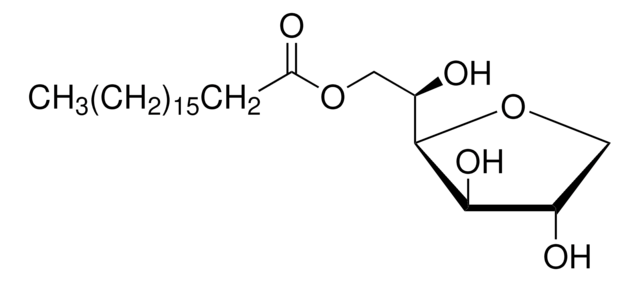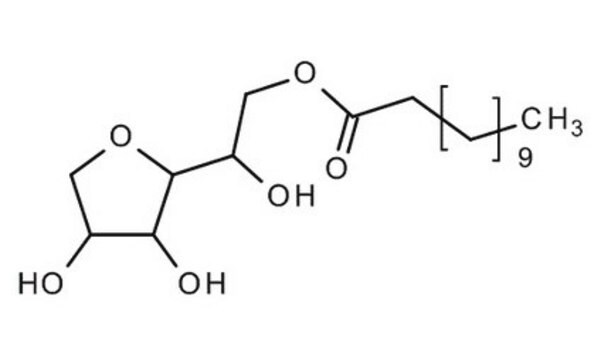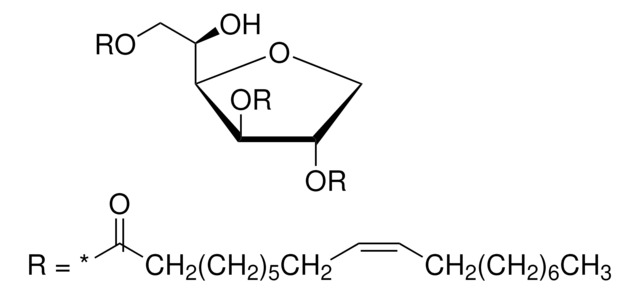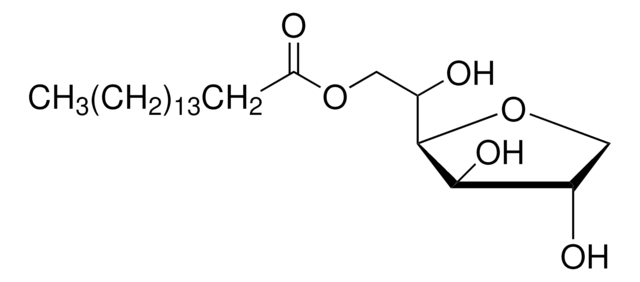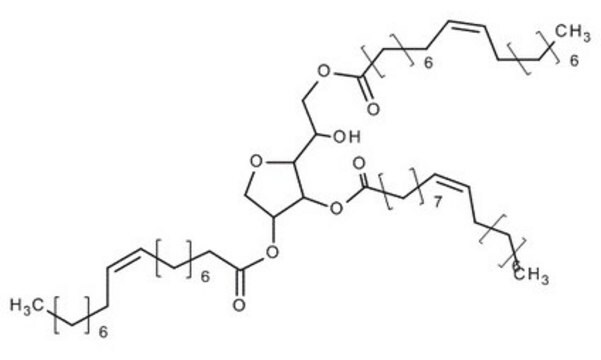S6635
Span® 20
Sinónimos:
Sorbitan laurate, Sorbitan monolaurate
About This Item
Productos recomendados
descripción
non-ionic
Nivel de calidad
mol peso
346.47 g/mol
características de los productos alternativos más sostenibles
Use of Renewable Feedstocks
Learn more about the Principles of Green Chemistry.
sustainability
Greener Alternative Product
concentración
≥44% (GC)
categoría alternativa más sostenible
, Aligned
cadena SMILES
CCCCCCCCCCCC(=O)OC[C@@H](O)[C@H]1OC[C@H](O)[C@H]1O
InChI
1S/C18H34O6/c1-2-3-4-5-6-7-8-9-10-11-16(21)23-13-15(20)18-17(22)14(19)12-24-18/h14-15,17-20,22H,2-13H2,1H3/t14-,15?,17+,18+/m0/s1
Clave InChI
LWZFANDGMFTDAV-WYDSMHRWSA-N
Descripción general
Aplicación
Otras notas
Información legal
Código de clase de almacenamiento
10 - Combustible liquids
Clase de riesgo para el agua (WGK)
WGK 1
Punto de inflamabilidad (°F)
>300.2 °F - closed cup
Punto de inflamabilidad (°C)
> 149 °C - closed cup
Equipo de protección personal
Eyeshields, Gloves, type N95 (US)
Elija entre una de las versiones más recientes:
¿Ya tiene este producto?
Encuentre la documentación para los productos que ha comprado recientemente en la Biblioteca de documentos.
Los clientes también vieron
Nuestro equipo de científicos tiene experiencia en todas las áreas de investigación: Ciencias de la vida, Ciencia de los materiales, Síntesis química, Cromatografía, Analítica y muchas otras.
Póngase en contacto con el Servicio técnico



